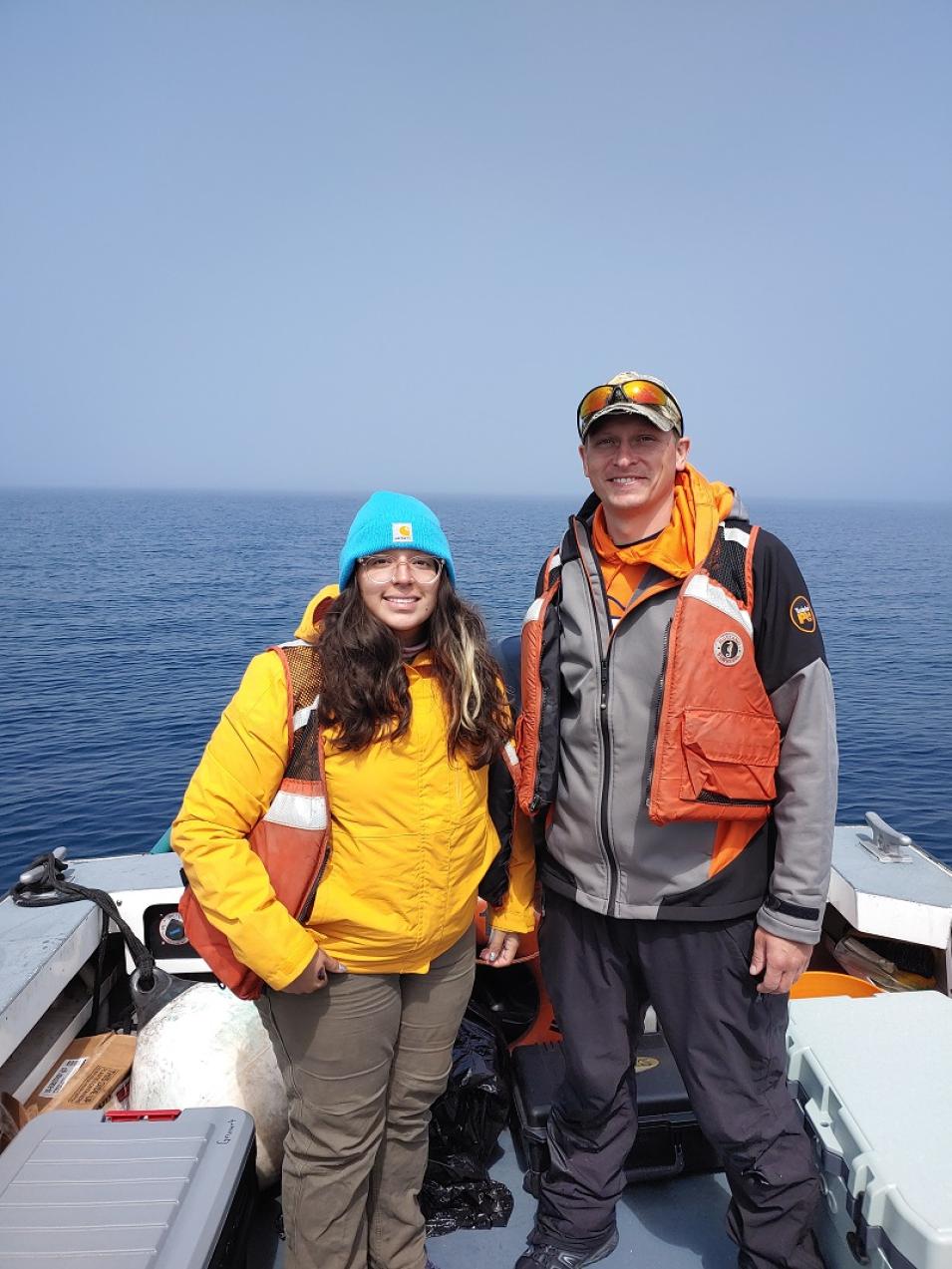Dr. Brice Grunert, Assistant Professor, Cleveland State University
Research Interests: Carbon cycling, remote sensing, and optics in aquatic systems, water quality, and ecosystem services.
Research Highlights: As organic matter on the landscape decays and dissolves, the compounds and molecules it’s composed of slowly leach into watersheds, which then transport the material to lakes and the coastal ocean. This mixture, which comes in colors from yellow to dark brown, is known as colored dissolved organic matter (or CDOM). As it flows downstream, it’s joined by the CDOM the waterbodies themselves produce from the organisms living within their habitats.
CDOM’s color varies based on the molecules it’s comprised of and they, in turn, have their own ecological roles to play, be it as a source of food, a means of absorbing harmful ultraviolet light, or in carbon sequestration. The ecological functions of CDOM have been difficult to observe at large scales, yet understanding the transport and cycling of these colored molecules at ecosystem scales is critical to improving the scientific community’s understanding of carbon transport, remineralization, and ecosystem processes at both local and global scales.
Among the scientists working to arrive at that better understanding is Dr. Brice Grunert, Assistant Professor in the department of Biological, Geological, and Environmental Sciences at Cleveland State University. It is there that Grunert and his colleagues conduct research that focuses on two components of CDOM biogeochemistry: 1) How changes in CDOM reflect broad shifts in the ecology and biogeochemistry of aquatic systems, including delivery of terrestrial material to the aquatic environment, and regulation of this carbon stock by microbes; and 2) How the transport, production, and breakdown of this globally significant carbon stock can be better tracked by satellite sensors.
“In the Arctic and Lake Superior, we have collected CDOM and selectively exposed it to sunlight and microbes to characterize the 'fingerprints' of the change created by each,” said Grunert. “With this information in hand, we are able to improve our knowledge of carbon cycling within aquatic systems, build better approaches for tracking these specific processes from satellite sensors, and provide transformation rates that can be incorporated into biogeochemical models.”
Grunert’s and his colleague’s research in regional and global systems has also shown that spectral changes in CDOM can indicate broad shifts in ecosystem processes, including nutrient availability and ecosystem productivity.
“We have found that these changes manifest in signals observable from future hyperspectral satellite sensors. This is quite important, as we routinely observe the front end of ecosystem productivity through variability in chlorophyll-a but are often missing what happens to this material after it is produced,” Grunert said. “Satellite estimates of CDOM, alongside chlorophyll-a, provide a window into understanding not just what is being offered at the ecological buffet, but when, where, and which entrees are being consumed.”

